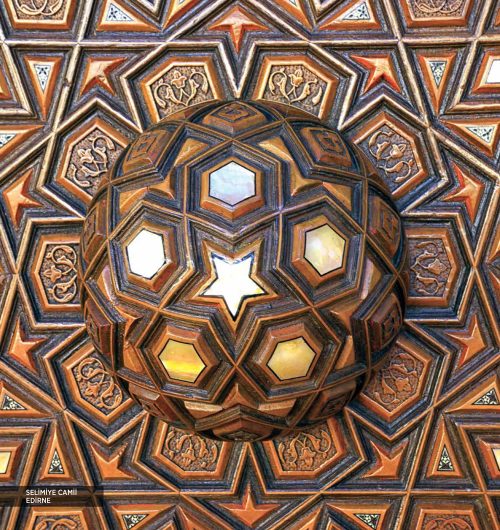With its durability, specific heat, and texture, wood as a construction material, has been a material that shows continuity of use since prehistoric times. Woodworking has been developed in Anatolia during the Seljuk period, monumental works were made during this period; mihrab, minbar, crown gate, stand, muezzins’ gathering place, and cabinet doors have been produced using woods from walnut, apple, pear, cedar, ebony, rosewood trees. The woodworking has also been used in ceilings and columns in many places of worship. The masters of this art are called as “nahhat” (master of wood carving) in Ottoman documents.
Undoubtedly, kundekari is the most striking type of the art improved using techniques such as carving, inlaying, intarsia, open-working, wood painting. Although the technique is known in the whole Islamic world, interestingly, only Turks used the word “kundekari”. Since the kundekari technique is applied by simply interlocking the geometric pieces using grooves without gluing or nailing, the works made using this technique have not been damaged by external factors and survived for centuries without losing their original form. In addition to kundekari, another technique in woodworking is inlaying. Extraordinary artifacts were created by inlaying technique using mother of pearl, ivory, and bone materials.
Although the number of masters performing the art of woodworking adhering to the traditional teachings has decreased in many Anatolian cities in time, they are still present and they perform their art in their workshops and make extraordinary works using the techniques they have been specialized in. Since the Islamic places of worship built by Teknom Yapı also function as a smallscale Museum of Traditional Islamic Arts, the masters performing this ancient art can be contacted wherever they are in Anatolia.

